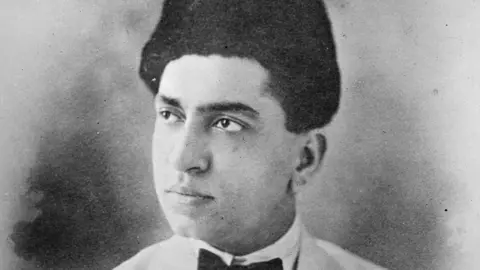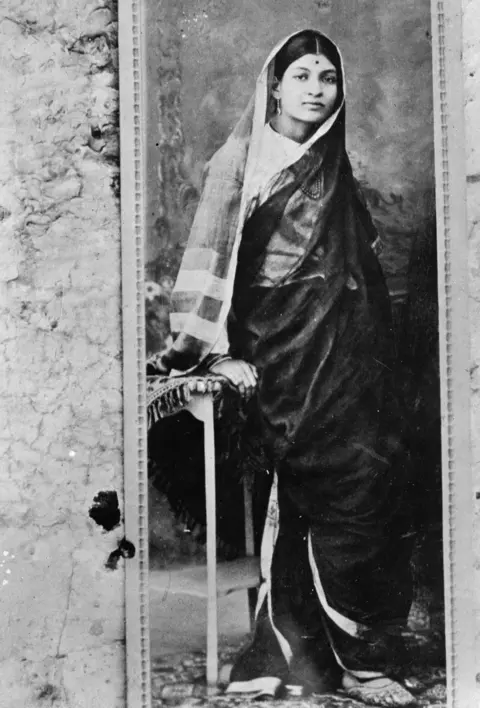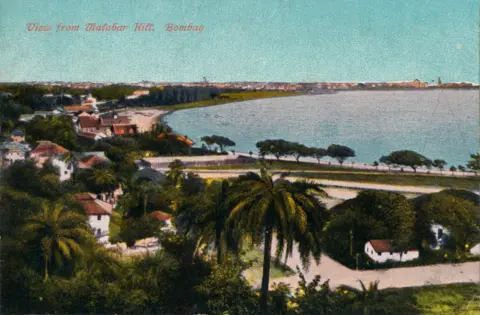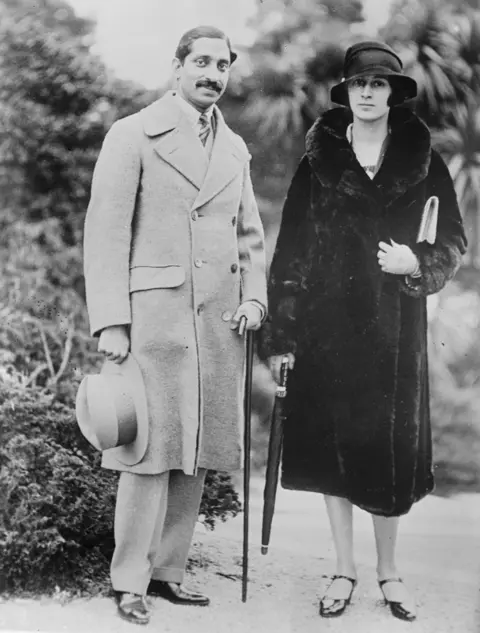A murder that shook British India and led to the overthrow of a king

 Alami
AlamiIt looked like a normal murder.
One hundred years ago today – January 12, 1925 – a group of men attacked a couple traveling by car in an upscale suburb of Bombay (now Mumbai) in colonial India, shooting one of the men dead. And the woman was hit on the face.
But the story that unfolded brought the case into the global spotlight, while its complexity put the country’s then British rulers in trouble and ultimately forced an Indian king to abdicate.
Newspapers and magazines described the murder as “perhaps the most sensational crime committed in British India”, and it became “the talk of the town” during the investigation and subsequent trial.
The victim, 25-year-old Abdul Qadir Bavla, was an influential textile businessman and the city’s youngest municipal official. His female companion, 22-year-old Mumtaz Begum, was a prostitute who had run away from a princely harem and had been living with Bawala for the past few months.
On the evening of the murder, Bawala and Mumtaz Begum were in a car with three other people in Malabar Hill, an affluent area along the Arabian Sea. At that time, cars were rare in India and only the rich owned cars.
Suddenly another car passed them. According to intelligence and newspaper reports, before they could react, it collided with their vehicle, forcing them to stop.
Mumtaz Begum later told the Bombay High Court that the attackers hurled abuses at Bawla and shouted “get the woman out”.
He then shot Bawala, who died a few hours later.
A group of British soldiers, who had inadvertently taken a wrong turn while returning from a golf game, heard the gunfire and rushed to the scene.
They managed to capture one of the criminals, but one officer was injured when one of the attackers opened fire on them.
 Alami
AlamiBefore fleeing, the remaining attackers made two attempts to snatch the injured Mumtaz Begum from the British officers who were trying to take her to hospital.
Newspapers suggested that the attackers probably intended to kidnap Mumtaz Begum, as Bawala – whom she had met during a demonstration in Mumbai a few months earlier and had been living with since then – had previously received several threats for harboring her. Were.
The Illustrated Weekly of India had promised readers exclusive photographs of Mumtaz Begum, while the police planned to issue daily bulletins to the press, Marathi newspaper Navakal reported.
Even Bollywood found the case so compelling that it was turned into a silent murder thriller within a few months.
Dhawal Kulkarni, author of The Bawla Murder Case: Love, Lust and Crime in Colonial India, says, “This case went beyond the usual murder mystery because it involved a rich and young tycoon, an insignificant king, and a beautiful woman.”
The footprints of the attackers, as speculated in the media, led investigators to the influential princely state of Indore, which was a British ally. Mumtaz Begum, a Muslim, lived in the harem of her Hindu king, Maharaja Tukoji Rao Holkar III.
Mumtaz Begum was famous for her beauty. KL Gauba wrote in his 1945 book, Famous Trials for Love and Murder, “In her own class it was said that Mumtaz had no peer.”
But the Maharaja’s (king’s) efforts to control her – preventing her from seeing her family alone and keeping her under constant surveillance – soured their relationship, says Kulkarni.
Mumtaz Begum testified in court, “I was kept under surveillance. I was allowed to have visitors and my relatives but there was always someone accompanying me.”
 getty images
getty imagesIn Indore, she gave birth to a baby girl, who died after some time.
Mumtaz Begum told the court, “After the birth of my child, I was not ready to stay in Indore. I was reluctant because the nurses had killed the daughter who was born.”
Within a few months, she fled to her mother’s birthplace, the northern Indian city of Amritsar, but troubles followed.
He was kept under watch there too. Mumtaz Begum’s stepfather told the court that the Maharaja tearfully begged him to return. But she refused and went to Bombay, where surveillance continued.
What the media had speculated after the assassination was confirmed at the trial: representatives of the Maharaja had indeed threatened Bawala with dire consequences if he continued to shelter Mumtaz Begum, but he ignored the warnings. Had given.
Following information given by Shafi Ahmed, the only attacker caught at the scene, Bombay Police arrested seven people from Indore.
The investigation revealed links with the Maharaja that were difficult to ignore. Most of those arrested were employed in the Indore princely state, had applied for leave around the same time and were in Bombay at the time of the crime.
This murder put the British government in trouble. Although it took place in Bombay, the investigation clearly revealed that the conspiracy was planned in Indore, which had deep connections with the British.
Describing it as “a most strange case” for the British government, The New Statesman wrote that if it were a small state, “there would be no particular cause for concern”.
“But Indore has been a powerful feudatory of the Raj,” it said.
The British government initially tried to maintain public silence about the Indore connection to the murder. But in private, it discussed the issue with great concern, as communications between the governments of Bombay and British India show.
Bombay Police Commissioner Patrick Kelly told the British government that all evidence “points to a conspiracy to abduct Mumtaz by means of hired assailants instigated in or from Indore”.
The government faced pressure from various quarters. The wealthy Memon community of Bavla, which has roots in modern-day Gujarat, raised the issue with the government. His fellow municipal officials mourned his death, saying, “Surely there must be something more behind the scene”.
Indian MPs sought answers in the upper house of the legislature of British India and the matter was also discussed in the British House of Commons.
 Alami
AlamiRohidas Narayan Dusar, a former police officer, wrote in his book on the murder that investigators were under pressure to proceed slowly, but then-Police Commissioner Kelly threatened to resign.
When the case reached the Bombay High Court, it involved top lawyers from both the defense and the prosecution.
One of them was Muhammad Ali Jinnah, who later became the founder of Pakistan after the partition of India in 1947. Jinnah defended Anandrao Gangaram Phanse, one of the accused and a top general of the Indore Army. Jinnah was successful in saving his client from the death penalty.
The court sentenced three people to death and three to life imprisonment, but stopped short of holding the Maharaja accountable.
However, Justice LC Crump, who led the trial, said that “there were people behind them (the attackers) whose identity we cannot pinpoint”.
“But where an attempt is made to kidnap a woman who was the mistress of the Maharaja of Indore for 10 years, it is not at all unreasonable to look at Indore as the area from where the attack would have taken place,” the judge said. Commented.
The prominence of the case meant that the British government had to take immediate action against the Maharaja. According to documents presented in the Parliament in India, he gave him a choice: face a commission of inquiry or step down.
The Maharaja decided to step down.
He wrote to the British government, “I am abdicating my throne in favor of my son with the understanding that no further investigation will be held regarding my alleged connection with the Malabar Hill tragedy.”
After abdicating the throne, the Maharaja created further controversy by insisting on marrying an American woman against the wishes of his family and community. Eventually, she converted to Hinduism and they married, according to British Home Office reports.
Meanwhile, Mumtaz Begum received offers from Hollywood and later went to America to try her luck there. After that she disappeared into oblivion.






